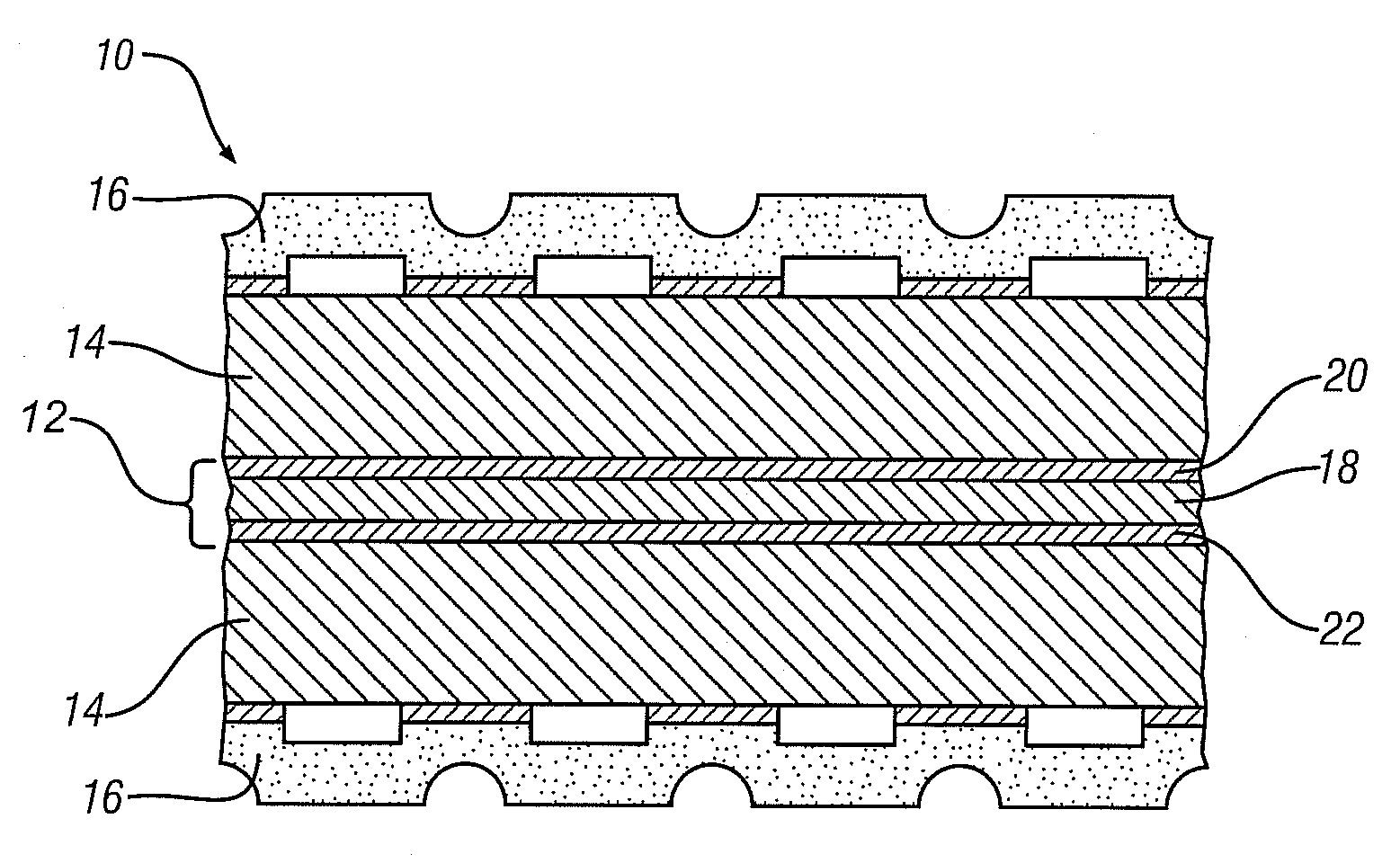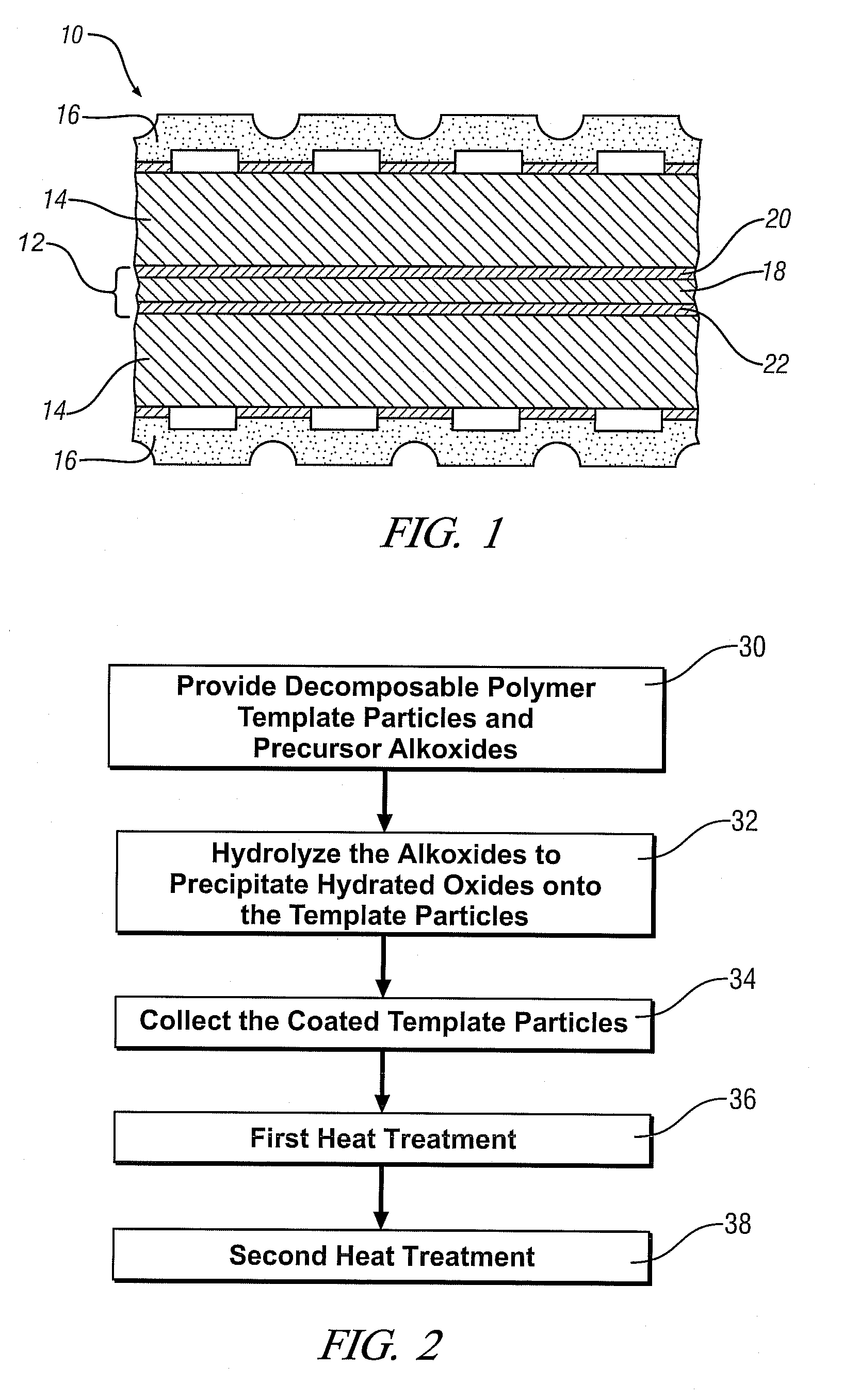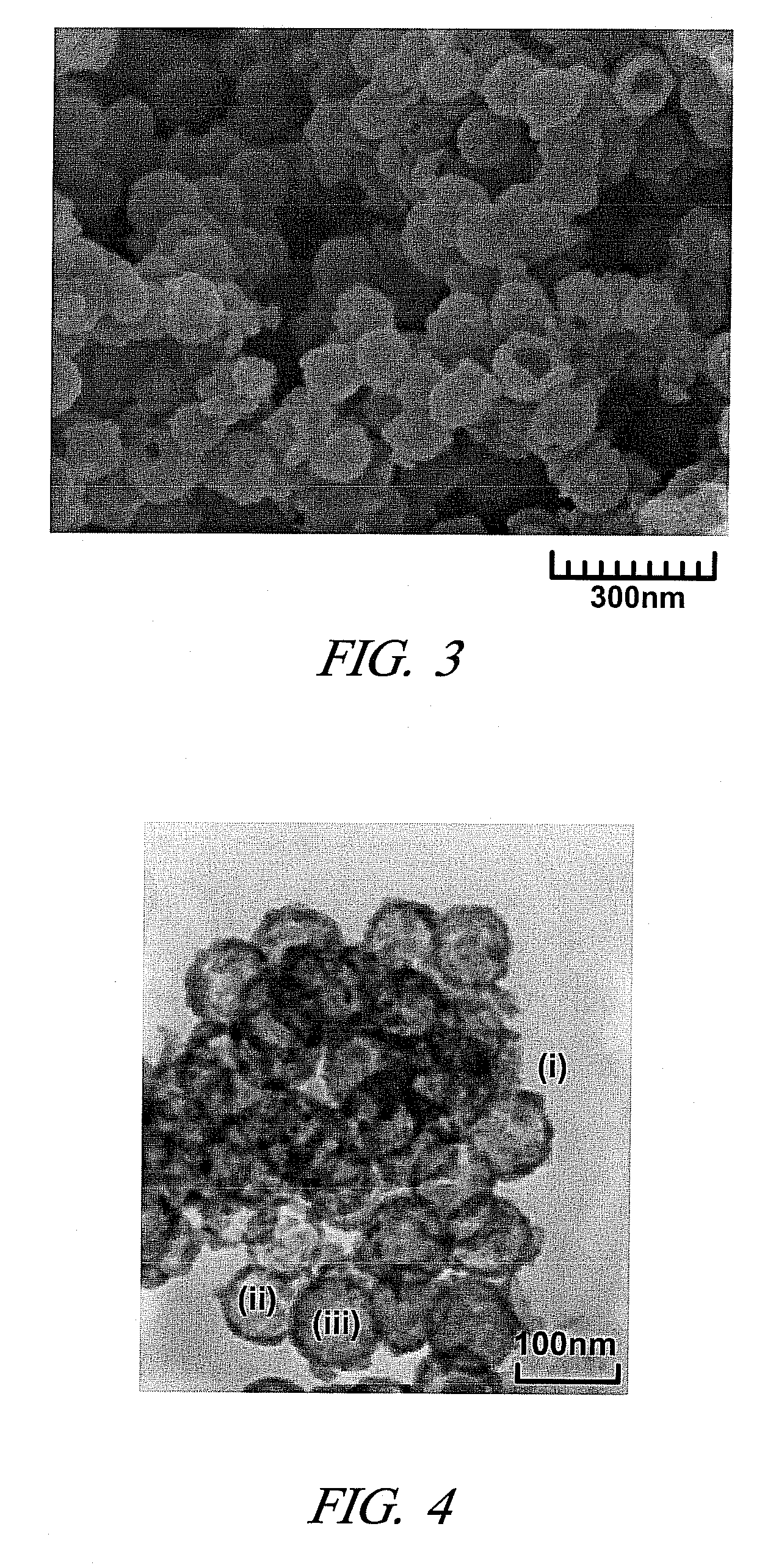Mesoporous electrically conductive metal oxide catalyst supports
a metal oxide catalyst and electrode technology, applied in the direction of metal/metal-oxide/metal-hydroxide catalysts, physical/chemical process catalysts, cell components, etc., can solve the problems of fuel cell performance setbacks, reducing the catalyst capacity of electrodes, and synthesis methods have not yet been developed, so as to facilitate the direct formation of rutile tio2, increase the electrical resistivity, and the effect of porosity and surface area
- Summary
- Abstract
- Description
- Claims
- Application Information
AI Technical Summary
Benefits of technology
Problems solved by technology
Method used
Image
Examples
example
[0037]Nano-polystyrene (PS) particles measuring about 200 nm in diameter, and their associated water dispersant, were thoroughly dispersed at slightly different amounts into three sample solutions of 105 mL of anhydrous ethanol, 5N nitric acid (HNO3), and hexadecyl-trimethylammoniumbromide (HATB). The amount of PS particles added to each sample solution was varied so that the three suspensions would have a different weight ratio of polystyrene particles to the product oxides (both Ti and Nb) which are deposited on the polystyrene particles. Those weight ratios were 0.15, 0.20, and 0.25. The nitric acid was added to each sample to lower its pH to around 3, and the HATB was added to each sample in an amount equal to about one weight percent of the PS particles. The resulting suspensions were then stirred vigorously for about 30 minutes.
[0038]Next, solutions containing 0.025 moles of titanium tetraisopropoxide and 0.002 moles of niobium pentaethoxide (corresponding to about 8 mol % dop...
PUM
| Property | Measurement | Unit |
|---|---|---|
| Temperature | aaaaa | aaaaa |
| Temperature | aaaaa | aaaaa |
| Pore size | aaaaa | aaaaa |
Abstract
Description
Claims
Application Information
 Login to View More
Login to View More - R&D
- Intellectual Property
- Life Sciences
- Materials
- Tech Scout
- Unparalleled Data Quality
- Higher Quality Content
- 60% Fewer Hallucinations
Browse by: Latest US Patents, China's latest patents, Technical Efficacy Thesaurus, Application Domain, Technology Topic, Popular Technical Reports.
© 2025 PatSnap. All rights reserved.Legal|Privacy policy|Modern Slavery Act Transparency Statement|Sitemap|About US| Contact US: help@patsnap.com



